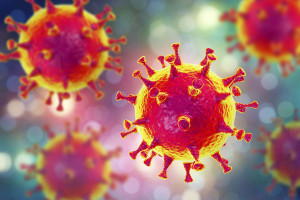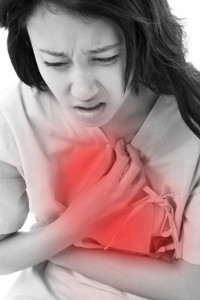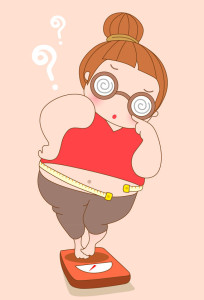 Why do we give antibiotics to animals? I used to think that it is done to treat bacterial infections in animals, especially when animals are grown in overcrowded environments. If only farmers knew about homeopathy, I thought. But the truth is more devious, most of the antibiotics are given to animals as appetite and growth stimulants, to promote fast weight gain, and give more profit to the livestock producers. If antibiotics cause weight gain in animals, will they have a similar effect on people? Are antibiotics the only substances that might cause weight gain?
Why do we give antibiotics to animals? I used to think that it is done to treat bacterial infections in animals, especially when animals are grown in overcrowded environments. If only farmers knew about homeopathy, I thought. But the truth is more devious, most of the antibiotics are given to animals as appetite and growth stimulants, to promote fast weight gain, and give more profit to the livestock producers. If antibiotics cause weight gain in animals, will they have a similar effect on people? Are antibiotics the only substances that might cause weight gain?
Obesity is an epidemic in the United States. More than one third (39.8% for adults) were obese and another 31.8% were overweight during 2015-2016. 9 If the trend continues, more than 85% of the US population will be overweight or obese by 2030.10 Children’s weight have increased as well, and obesity predisposes to heart disease, diabetes, cancer and other chronic conditions.
There are many factors that might contribute to weight gain. Some medical conditions, like low thyroid function can cause a person to gain weight. A connection between sleep quantity and quality, stress and disruption of circadian rhythms was found to correlate with weight gain. We inherited an ability to gain more weight in the fall in preparation for the food scarcity in winter (which might not be true now but was in the past). The most obvious reasons that apply to all humans are amount of food that we eat and activities we do. Weight depends on the difference between an amount of energy obtained from food and energy used during physical activities . If it was always as simple as it sounds, it would be easy to lose or gain weight, eat more and exercise less and you will gain weight, do the opposite and you will lose those extra pounds.
Exercise more
Movement is essential for humans, that is how we evolved, by hunting, gathering, running, lifting, and swimming, we need to move to be healthy. Movement affects everything from circulation to digestion. You do not have to exercise to be healthy, if you move a lot as a part of your everyday life that will be enough to stay healthy. Our modern sedentary lifestyle does not always support enough movements to stay healthy and keep our weigh in check, so we need to exercise. When you move more, you burn more calories, you lose more weight. On the other hand, when you move more, you feel more hungry and you eat more. It is not easy to exercise when you have extra pounds, muscles have to work really hard to move all that extra weight. Sometimes, we have to take a break from vigorous exercises due to family and work commitments, or when recovering from a trauma. Weight gain might creep up during those times as the appetite is the same, but level of exercise is significantly less. If you are really contemplating losing those extra pounds, you have to consider other factors as well, like what you put into your body as a fuel for the exercise, and how your body metabolizes that food. Otherwise, exercise alone might not bring a sustainable weight loss.
Eat less
The less fuel you put in, the faster you burn it with movement, you eat less, you weigh less. It is important to keep a balance between lowering food intake and still getting all necessary nutrients. The quality of food we eat plays a big role in staying healthy.
If you eat a diet full of processed foods high in sugar and low in nutrients, foods full of pesticides, artificial coloring and other chemicals you are not going to build health even if you eat less of it. Food addiction is real, research shows that sugar is more addictive than cocaine and it is everywhere. 19 It is not easy to eat less amount of addictive foods, but it is possible. You will lose weight initially, but your nutrients starving body will be neither happy nor healthy. Eventually, the body starving from absence of minerals, vitamins, phytonutrients and real fats will not be able to withstand cravings for any food, and you will start eating more of the same favorite processed foods once again.
In order to lose weight for good you have to change not only the amount of the foods you eat, but eat food with high nutrient content. For some people that way of eating will eventually bring sustainable results, but many others will still struggle.
Chemicals in foods and environment
In the modern world we have another player besides exercise and high quality nutritious foods, chemicals. Certain environmental and artificial chemicals can alter our genetic programming that defines how much food it takes to put on weight, and how much exercise is needed to reduce it.
Obesogens
Obesogen is a chemical that causes weight gain and leads to obesity. Obesogens change how energy is stored and used in the body leading to weigh gain and obesity. List of known obesogens is quite long.
“Obesogens are chemical compounds that can promote obesity by increasing the number of fat cells (and fat storage into existing fat cells), by changing the amount of calories burned at rest, by altering energy balance to favor storage of calories, and by altering the mechanisms through which the body regulates appetite and satiety. ” 6
The idea that chemicals can cause obesity was introduced by Dr. Paula Baillie-Hamilton in 2002 in an article that focused on environmental chemicals and obesity. She suggested that the obesity epidemic is correlated with the increased production of chemicals and identified studies showing that exposures to a variety of chemicals led to weight gain.1
In her article, the chemicals that have the ability to cause weight gain included organochlorine pesticides, carbamates (insecticides), PCBs (polychlorinated biphenyls), plastics such as phthalates and BPA (bisphenol A), heavy metals and solvents.
In 2006 Dr. Bruce Blumberg published a paper showing that TBT (tributyltin), a compound that was used in marine paint, could lead to weight gain in mice and coined the term obesogen.1
Drugs
It is well known that certain drugs have side effects of weight gain, drugs like SSRIs (selective serotonin uptake inhibitors), corticosteroids, atypical anti-psychotics, tricyclic antidepressants, antidiabetic drugs like rosiglitazone (Avandia) and insulin.
Antibiotics have been linked to weight gain for a long time. Low doses of antibiotics have been added into animals feed since 1950s to promote animals growth and weight gain. In a study published in 2012 in the Nature magazine researches discovered that when they fed low dose of antibiotics to mice, the mice gut microbiome changed just like in a livestock, and they turned on genes related to lipid conversion in the liver. Similar to farm animals, the antibiotic-fed mice put on weight as well. 2
Only in the past decade we have started to understand what role trillions of microbes that we host play in our health, and how disruptive antibiotics and artificial chemicals are for our little tenants. Human microbiome (genetic material of all the microbes, bacteria, fungi, protozoa and viruses, that live on and inside the human body) is 200 times the number of genes in the human genome.15 Our microbes keep us healthy, digest food we eat, produce neurotransmitters serotonin and dopamine, vitamins and make minerals available for absorption.
Microbiologists Rob DeSalle and Susan Perkins wrote: “It’s not the microbes that cause problems with our health, but rather disruptions in the natural ecology of our bodies that lead to illness. It is only when the co-evolved ecological balance of our body’s cells with the trillions of microbes living in and on us is thrown out of whack that pathogenicity [disease] arises.” 14
Food additives
Food additive MSG (Monosodium glutamate) has a side effect of an activator of brain pathways that cause weight gain in animal models.3
Recent study16 from Harvard University found that food additive propionate, contributes to insulin resistance and high blood sugar, and causes weight gain. Propionate is a short-chain fatty acid that is used as a mold inhibitor in foods created to have a long shelf-life. It is found in innumerous amount of bread products, commercially prepared foods and diet drinks.
Endocrine disruptors (EDCs)
Endocrine disruptors (EDCs) are chemicals that interfere with endocrine (hormonal) system.
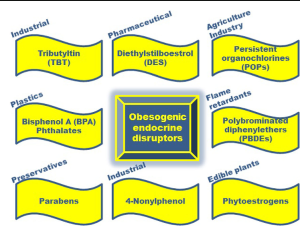
Weight gain is controlled by the endocrine system and so is sensitive to disruption by EDCs. It is not surprising that scientists discovered that the same EDCs that cause reproductive and thyroid diseases could cause weight gain.
EDCs interfere with estrogen, androgen and thyroid hormone signaling. EDCs mimic natural hormones and can cause multiple diseases and dysfunctions in reproduction, learning, memory, and behavior. Hormone disruption can cause endometriosis, fibroids, PMS, PCOS (polycystic ovary syndrome) and menopausal issues. EDCs are found in multiple products, in pesticides, herbicides, fungicides, flame retardants, surfactants, plastics, plasticizers, sunscreens, cosmetics, cigarettes (nicotine), solvents, heavy metals, industrial byproducts, POPs (persistent organic pollutants), and personal care products. 11 EDCs exposure comes from air, dust, water, food, placenta, they are hard to avoid and some of them can be active for years. “There are now around 1,000 chemicals designated as EDCs ” 1.
Obesity starts in the womb
Not so long ago scientists thought that the placenta shielded unborn baby from chemicals in the environment and foods from the mother. Environmental Working Group (EWG) 2005 study found 287 different industrial chemicals and pollutants in babies’ cord blood. 12
Chemicals like PCBs (Polychlorinated biphenyls), VOCs (Volatile Organic Compounds), dioxins, pesticides, heavy metals like lead, cadmium and mercury, flame retardants, organic solvents were found in breast milk. 13
There is a direct connection between prenatal environment, early life nutrition and chemicals exposure to later-life obesity. Childhood obesity is associated with maternal smoking during pregnancy, with nicotine being an endocrine disruptor.4 Neonatal exposure to low doses of DES (diethylstilbestrol) causes weight gain and increased fat in females. The connection between estrogenic chemicals and obesity is now well known. Developmental exposure to BPA (bisphenol A) affects brain satiety centers.
According to multiple human studies from 2000 to 2014 prenatal exposure to the following chemicals are implicated in weight gain in childhood and later in life: PCBs (polychlorinated biphenyls), DDE (from breakdown of DDT), hexachlorobenzene (fungicide), POPs (environmental persistent organic pollutants), PAHs (polycyclic aromatic hydrocarbons), persistent organochlorines (pesticides), BPA, DDT (pesticide). 5
Obesogens have heritable effects
Early exposure to obesogens is inheritable. Pregnant mice were treated with low doses of TBT (tributyltin) produced offspring with larger fat deposits and fatty livers; their gene expression pattern indicated bios towards obesity. These impacts of TBT persisted to the third generation of mice (great-grandchildren). 18
Lower your exposure to obesogens
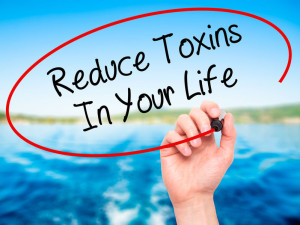
Each obesogen in the studies presented has a negative effect on human and/or animal body. The synergistic effects of these individual obesogens has never been tested. One can only imagine what effect multiple obesogens have on humans as we are exposed to multiple combinations of obesogens in our environment every day.
It is clear from the research that in order to lose weight in our modern times it is not enough to eat less and move more. We have to reduce toxic body burden, reduce exposure to toxic chemicals and remove obesogens. Only then we will be able to correctly influence our genetic programming that in turn will restore our body’s ability to regulate appetite and satiety, properly regulate amount of fat cells created and how fat is stored, improve the way energy from foods is stored and used.
We cannot do much about chemicals that being used outside of our homes but we can lower our exposure by revising what products we use for personal care and cleaning, what foods we eat and containers we use.
Homeopathic Detoxification methods
Homeopathic remedies are made from very small amounts of substances that are diluted and energized. They are effective and safe to use, and they do not cause endocrine disruptions or weight gain. It goes without saying that using homeopathic remedies will not add any toxins to your body.
Detoxification is a fancy word for removing toxins from the body. We have an ability to remove toxins through our detoxification pathways. Organs of elimination, liver, kidneys, lungs, bowels, skin, work hard to remove as many toxins as possible. More and more chemicals are created and introduced into our environment. We live in a toxic world, and the need for toxic load elimination is getting higher and higher. Often, the body gets so overwhelmed with toxins that it needs help removing them before further progress toward better health becomes possible.
To stimulate a toxin release a specific remedy might be used that is made from that specific or similar toxin. High potencies of the remedies are used for detoxification, no toxins are present in the remedies. The remedies gently prompt the body to release and remove the toxins.
Homeopathic remedies are given in a person specific protocol to prompt the body to eliminate multiple toxins and restore the body’s homeostasis. Overall support and organ support are given to promote well being during the detoxification process. Gemmotherapy (the embryological tissues of plants), FCT (Field Control Therapy), HDT (Homeopathic Detox Therapy) and other homeopathic methods and natural remedies are used to stimulate the body to release toxins gently and safely. Homeopathic detoxification has to be done under the supervision of a professional homeopath.
REFERENCES:
- Jerrold J. Heindel, Program on Endocrine Disruption Strategies, Commonweal, Bolinas, CA, United States; “History of the Obesogen Field: Looking Back to Look Forward”, Front. Endocrinol., 29 January 2019 https://www.frontiersin.org/articles/10.3389/fendo.2019.00014/full
- Ilseung Cho 1,2 , Shingo Yamanishi 1 , Laura Cox 3 , Barbara A. Methe ´ 4 , Jiri Zavadil 5,6 , Kelvin Li 4 , Zhan Gao 3 , Douglas Mahana 3 , Kartik Raju 3 , Isabel Teitler 3 , Huilin Li 7 , Alexander V. Alekseyenko 1,6 & Martin J. Blaser 1,2 “Antibiotics in early life alter the murine colonic microbiome and adiposity”, August 20, 2012 Vol 488 Nature https://www.nature.com/articles/nature11400.epdf
- Roman-Ramos R, Almanza-Perez JC, Garcia-Macedo R, Blancas-Flores G, Fortis-Barrera A, Alarcon-Aguilar FJ. “Monosodium glutamate neonatal intoxication associated with obesity in adult stage is characterized by chronic inflammation and increased mRNA expression of peroxisome proliferator-activated receptors in mice.” Basic Clin Pharmacol Toxicol. (2011) 108:406–13. doi: 10.1111/j.1742-7843.2011.00671.x https://www.ncbi.nlm.nih.gov/pubmed/21205225
- Behl M, Rao, D. Aagaard K, Davidson TL, Levin ED, Holloway AC. “Evaluation of the association between maternal smoking, childhood obesity, and metabolic disorders: a national toxicology program workshop review.” Environ Health Perspect (2013) 121:170–80. doi: 10.1289/ehp.1205404
- La Merrill M, Birnbaum LS. “Childhood obesity and environmental chemicals.” Mt Sinai J Med. (2011) 78:22–48. doi: 10.1002/msj.20229
- Robert H Lustig “Obesity before birth: Maternal and prenatal influences on the offspring.”Springer Science & Business Media, September 23, 2010
- https://www.cdc.gov/obesity/data/adult.html
- https://www.cdc.gov/obesity/data/childhood.html
- Cheryl D. Fryar; et al. (September 2018). “Prevalence of Overweight, Obesity, and Severe Obesity Among Adults Aged 20 and Over: United States, 1960–1962 Through 2015–2016“, (PDF). Health E-Stats. National Center for Health Statistics, Division of Health Interview Statistics. Retrieved December 26, 2018. https://www.cdc.gov/nchs/data/hestat/obesity_adult_15_16/obesity_adult_15_16.pdf
- Hruby, Adela; Hu, Frank B. (July 1, 2015). “The Epidemiology of Obesity: A Big Picture”. PharmacoEconomics. 33 (7): 673–689. doi:10.1007/s40273-014-0243-x. ISSN1179-2027. https://www.ncbi.nlm.nih.gov/pmc/articles/PMC4859313/
- https://endocrinedisruption.org/
- “The Pollution in Newborns. A benchmark investigation of industrial chemicals, pollutants and pesticides in umbilical cord blood”, Environmental Working Group, July 14, 2005 https://www.ewg.org/research/body-burden-pollution-newborns
- Massart F1, Gherarducci G, Marchi B, Saggese G. “Chemical biomarkers of human breast milk pollution”, 2008 Mar 28;3:159-169. PMID:19578503 https://www.ncbi.nlm.nih.gov/pmc/articles/PMC2688366/
- Rob DeSalle and Susan Perkins “Welcome to the Microbiome: Getting to Know the Trillions of Bacteria and Other Microbes In, On, and Around You “, Yale University Press; 1 edition (November 10, 2015)
- https://depts.washington.edu/ceeh/downloads/FF_Microbiome.pdf
- Amir Tirosh Ediz S. Calay,Gurol Tuncman , Kathryn C. Claiborn, Karen E. Inouye, Kosei Eguchi, Michael Alcala, Moran Rathaus, Kenneth S. Hollander, Idit Ron, Rinat Livne, Yoriko Heianza, Lu Qi, Iris Shai, Rajesh Garg, Gökhan S. Hotamisligil “The short-chain fatty acid propionate increases glucagon and FABP4 production, impairing insulin action in mice and humans”, Science Translational Medicine 24 Apr 2019: Vol. 11, Issue 489 https://stm.sciencemag.org/content/11/489/eaav0120.full
- https://chicago.suntimes.com/2019/11/20/20968841/common-food-additive-raises-risk-for-obesity-diabetes-propionate
- Amanda S. Janesick, Bruce Blumberg, “Obesogens: an emerging threat to public health”, American journal of obstetrics and gynecology, May 2016: 214(5); 559-565 https://www.ncbi.nlm.nih.gov/pmc/articles/PMC4851574/
- Ahmed SH1, Guillem K, Vandaele Y.“Sugar addiction: pushing the drug-sugar analogy to the limit.” Curr Opin Clin Nutr Metab Care. 2013 Jul;16(4):434-9. doi: 10.1097/MCO.0b013e328361c8b8. https://www.ncbi.nlm.nih.gov/pubmed/?term=23719144
